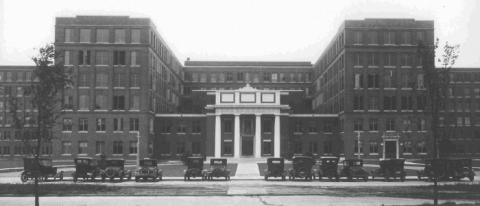Samuel Hopkins Bassett was an American physician who worked as part of the Manhattan Project at the University of Rochester.
Born in Dutchess County, New York, Bassett attended Cornell University, where he received his A.B. in 1920 and his M.D. in 1924. After brief stays at the Reconstruction Hospital in New York City, New York Hospital, and the Lane Hospital in San Francisco, Bassett joined the staff of Strong Memorial Hospital in 1927. The next year, he joined the faculty of the School of Medicine and Dentistry at the University Of Rochester.
From 1945 to 1948, Bassett led the University of Rochester’s human metabolism ward at Strong Memorial Hospital. During the Manhattan Project, this ward became a central site for human research using radioactive isotopes. As head of the two-bed ward, Bassett was part of the Manhattan District’s “Special Problems Division,” which concentrated on health monitoring in the production plants, developing monitoring instruments, and researching the metabolism and toxicology of radioactive materials. This was one of the sites of the controversial human plutonium experiments. Bassett also participated in the first Operation Crossroads test of 1946.
In 1948, Bassett was appointed by the Veterans Administration as chief of research at its center in Los Angeles. That same year, he joined the faculty of the new medical school of the University of California, Los Angeles. The Veterans Administration tasked Bassett with helping establish a group of medical research laboratories, and in 1959 he was named the senior medical investigator. At the University of California, Los Angeles, Bassett helped to develop the school’s curriculum and to establish its metabolic research unit.
Bassett died January 1, 1962, in Los Angeles.





